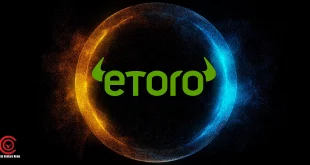If you have been in the thrilling and complex space of digital currency now, you must have heard about the term “hash rate”. In the context of digital currency, this is present in Bitcoin mining and other cryptos.
Mining is the procedure of getting a digital currency via the use of powerful computers and software that are specially designed for it. Digital currency miners conduct the procedure through highly powerful equipment by making them solve highly complex mathematical problems.
After the complex mathematical problems have been solved successfully, the miners can then generate new BTCs and can also make the whole BTC network secure and also reliable via having the transaction data verified.
The Idea Of Hash Rate And How It Works
This section will talk about what is hash rate in mining? When mining is done, the strength of the high-performing computers that are served to attain bitcoin and other cryptos is calculated via a hash rate. This hash power, which is also known as hash power, is stated as the total processing power or the speed of the Bitcoin network. It is considered an important part of the system, as it measures and also portrays the productivity and efficiency of the mining machine that is being used.
This mining hardware performs the computation to reach a valid block hash, which is defined as the identification number or reference of a block which is the record of all the computer files, necessary data, and information present in the blockchain.
A hash comprises a block header above a transaction’s block. It includes 64 characters that are composed of letters and numbers and offers the summary of the complete block, which comprises information like the version of the block, the previous block hash, the Merkle root or the transactions of the block hashed together, and also the time when the miner attempts to mine the block.
It also comprises the bits or the abbreviated version of the target hash which is defined as
“The number that a hashed block header must be less than or equal to for a new block to be awarded.”
It also has the nonce, which is dubbed as the “mining field” that the miners alter to reach at the hash of the block header, which stays below the target. A nonce is a random number that can only be availed once. It also operates like a lucky number.
To arrive with a valid block hash, which begins with zeros, it is the miner’s responsibility to hash the header of the block and get a hash that is below the target. This will enable them to develop a unique label for each block. It is crucial to note that the target alterations along with the level of problem, so the miners change the nonce until they attain a hash of their block headers.
Hash Rate Units And Measurement
To calculate a hash rate, the unit h/s (hashes per second) is used. This is used to measure the machine’s speed that is used for bitcoin mining. It is calculated using terms like Mega, Kilo, Giga, Peta, Tera, and Exa. Here is a hash power, hash rate chart.
For instance:
- 1 kh/s (1 kilo hash per second ) = one thousand hashes every second (1,000 h/s)
- 1 Mh/s (1 mega hash per second) = one million hashes every second (1,000,000 h/s)
- 1 Gh/s (1 giga hash per second) = one billion hashes every second (1,000,000,000 h/s)
Another fact that needs to be noted is that the hash rates vary depending on the digital currency and what equipment or machine was used to mine it. Varied digital currencies do not have a similar amount of hash power.
With that context, let us discuss the difficulty of the hash rate on miners. Hash power directly impacts digital currency miners, whether they are mining via a mining pool or on their own. But what hash rate is good for miners? A bigger hash rate translates to bigger chances of mining any block. So when the rate is at the top, there are more chances for the miners to get a block reward from the blocks that have been mined successfully.
Conclusion
The digital currency hash rate is the number of times every second that computers on the BTC or any other digital currency network are hashing the data to verify their transactions and conduct the encryption that secures the network. The hash power is a pointer of how healthy the BTC or other crypto network is at any given time, and is operated mainly by difficulty mining and the total number of miners. Basically, a high hash rate is thought to be a good thing.
Frequently Asked Questions On Hash Rate
1. What is a high hash rate?
A bigger hash rate translates to bigger chances of mining any block. So when the rate is at the top, there are more chances for the miners to get a block reward from the blocks that have been mined successfully.
2. How is the hash rate calculated?
Hash power is calculated through a hash rate calculator. To calculate a hash rate, the unit h/s (hashes per second) is used. This is used to measure the machine’s speed that is used for bitcoin mining. It is calculated using terms like Mega, Kilo, Giga, Peta, Tera, and Exa.
3. What is Hashrate in BTC?
The Bitcoin hash rate is the number of times every second that computers on the BTC or any other digital currency network are hashing the data to verify their transactions and conduct the encryption that secures the network. There are Bitcoin hash rate calculators that do their job.
- The Bitcoin Wallet Boom: Why Demand Is Skyrocketing - 25/11/2023
- How To Choose The Best Crypto Exchange Affiliate Programs - 03/03/2023
- Crypto License: How To Get It Now? - 03/02/2023
 Crypto Venture News One stop Crypto Track Down
Crypto Venture News One stop Crypto Track Down 






